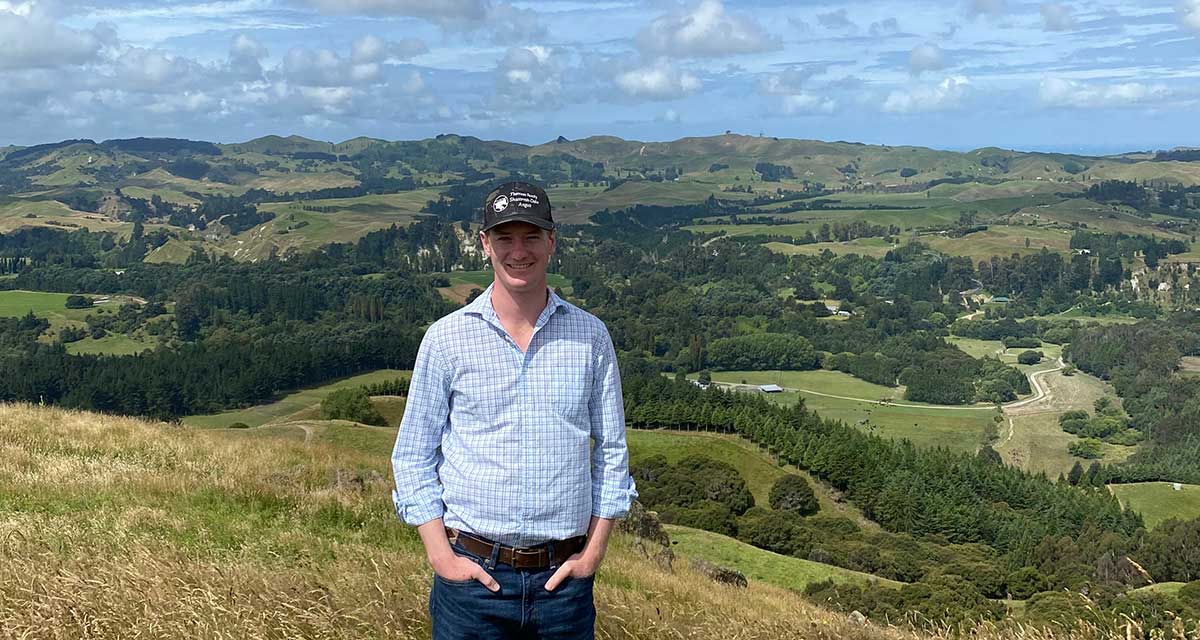Damien’s Trans Tasman Experience


The 2022 Angus Foundation and New England Travel Centre Trans Tasman Bursary recipient Damien Thomson recently completed his New Zealand tour, spending four weeks across the ditch taking in the country’s production systems and beef supply chain.
Damien has recapped his experience and the key take homes from his time in New Zealand, as well as provided some advice for future recipients.
Read his report here:
It’s no exaggeration to say my trip around New Zealand was the experience of a lifetime. I feel incredibly fortunate to have had the opportunity and would like to sincerely thank the Angus Australia Foundation and the New England Travel Centre for making it possible. The landscapes are magnificent, the cattle are beautiful and the people are wonderful. I connected with a huge network of people from all sectors of the industry and was able to have a close look at progeny from some of our current and future AI sires performing in different environments. I also found some exciting new genetics to bring back home with me that will fit into our program at Shacorrahdalu Angus really well.
The trip through New Zealand has not only given me a better understanding of the New Zealand industry but also the Australia industry. Experiencing an industry with a different environment, targeting different genetics and markets makes you realise that how we operate in Australia is not the only way, but there is very good reason why we operate that way. How is never as important as why and I now have a better understanding of the why behind the New Zealand and Australian beef industries
The New Zealand environment is similar to Tasmania and Victoria and is most suited to dairy production. Sheep and cattle have consequently been pushed further and further up into the hills and the cattle are often seen primarily as a grazing tool to support lamb and wool production. This has influenced the strong emphasis on moderate mature weight and structural soundness in the New Zealand cattle so they are better able to forage across the steep slopes. There is also only one major commercial feedlot in New Zealand, meaning it is mainly grass-fed production. Therefore, the main selling point for New Zealand beef in the export market is its provenance story that surrounds the ‘Taste Pure Nature’ brand.
There were too many visits over the four-week adventure to describe them all, but a few highlights included catching up with fellow GenAngus alumni George Giddings at Meadowslea genetics and Angus Pilmore visiting Fossil Creek Angus. It was great to inspect a few HPCA Zephyr progeny at Storth Oaks Angus, Seven hills Angus and Lake Farm Genetics and also learn more about the legendary sires Matauri Reality and Te Mania Infinity which have had a huge impact in Australia. I even got to see Infinity hanging up on the wall in the saloon bar at Te Mania Angus!
I stayed in some amazing places and was overwhelmed by the generous hospitality of everyone I visited. I would like to thank each and every one of them for their time and openness in showing me their programs. It made the trip a truly special experience which I will cherish for a long time. I also look forward to staying connected and hopefully returning the favour and hosting visits at Shacorrahdalu Angus.
For the next Trans-Tasman recipient, the most important thing for your trip is an open mind and a willingness to learn and challenge ideas. Challenging your own ideas as well as the ideas of your hosts at each visit is the best way learn and really get to the nitty-gritty of different concepts or ideas. This is not always comfortable, but comfort and growth do not co-exist. The second most important thing is to plan rest days. All this challenging conversation, learning and growth creates a mental strain combined with travelling in a foreign area and meeting lots of new people. It’s crucial to recharge so that you are fresh for the next visit. Importantly, a full day packed with touristy activities is not a rest day!